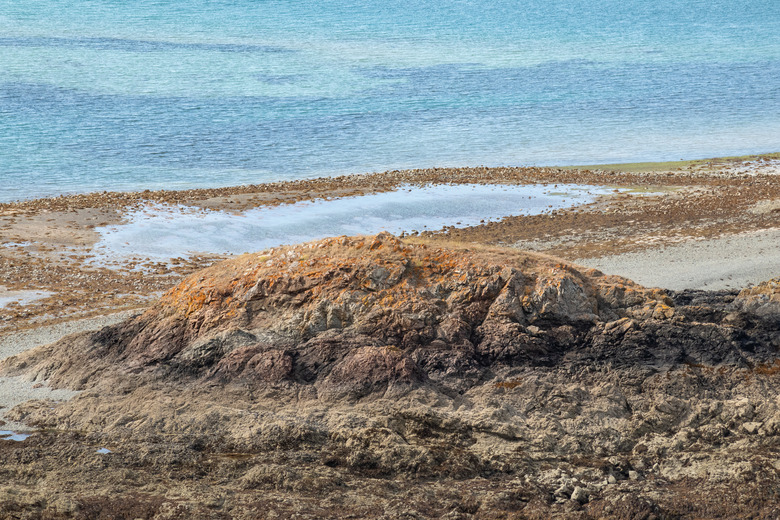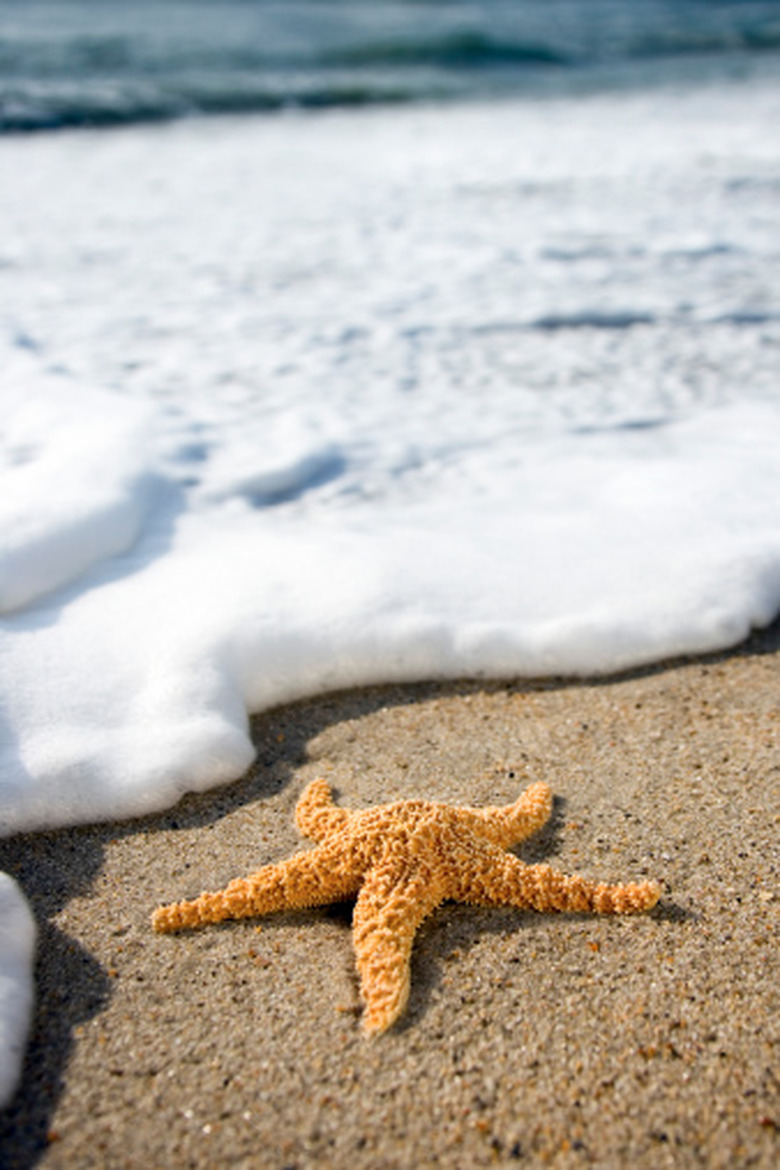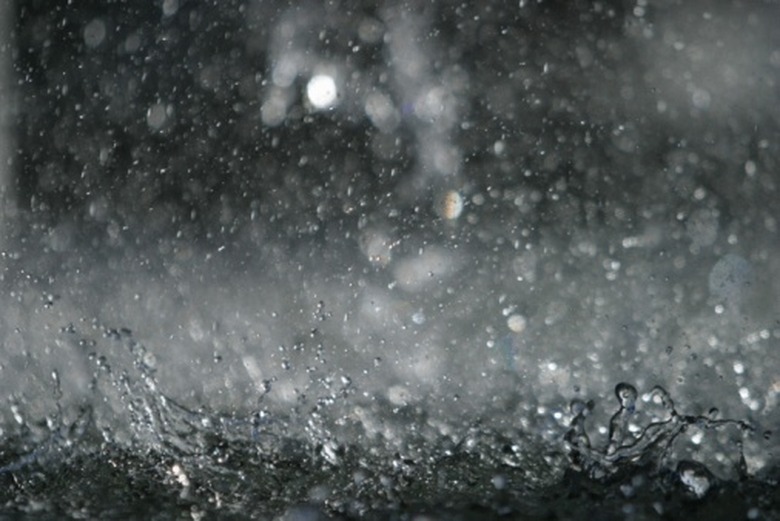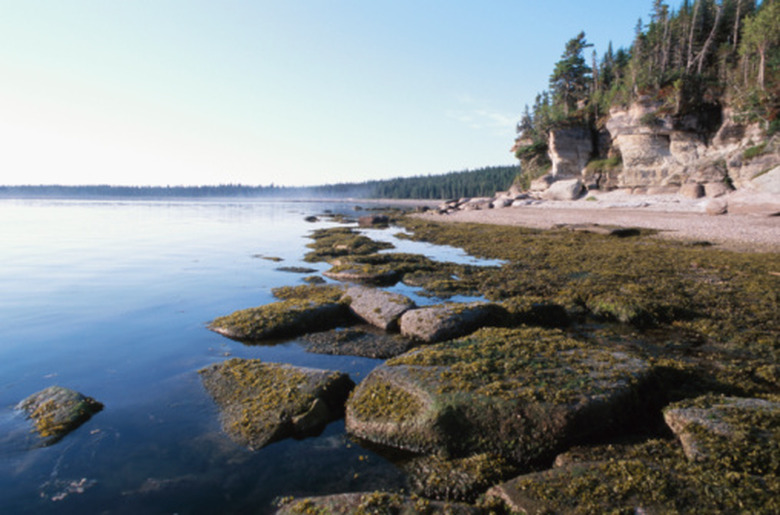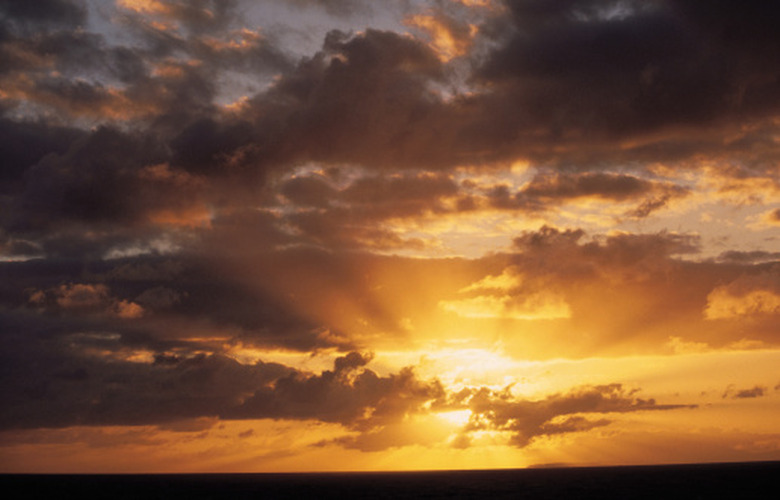Abiotic Factors Of Tide Pools
Tide pools are those areas of the coastline that are both exposed to the air and covered by water, depending on the tides. Also called the intertidal zone, a number of abiotic factors influence the unique ecosystem found in these areas. Because of the constantly changing nature of tide pools, the organisms that have made their homes there need to be adapted to deal with that change.
Tides
Tides
As the ocean tides go in and out, tide pools are alternately exposed to a marine environment and a relatively dry one. Tidal pools are defined by the tides; the high tide line marks the area farthest inland, while the low tide line marks the change between the tidal pool and the strictly marine environment. Tides not only change with the phases of the moon, but also reach different points based on the time of the year as well, when the Earth is closest to and farthest away from the sun.
The water of the tidal zone is almost always moving, whether the tide is coming in or going out. Because of this movement, most of the creatures that live there have found a way to steady themselves and remain relatively stationary through the movement. Hermit crabs bury themselves under rocks while barnacles attach themselves directly to those rocks.
Salinity
Salinity
Tidal pools exist on the shorelines of oceans, where there is often a meeting between saltwater and freshwater environments. The shores are covered with saltwater as the tides come in, but there is often a considerable amount of freshwater runoff that impacts the environment as well. The amount of freshwater varies based on factors such as melting snow and rain. Because of this variance, the organisms in tide pools must adapt to tolerate a wide range within the salinity of the water. While most water-dwelling organisms are adapted to life in either a marine or freshwater environment, crustaceans and fish such as sculpin must be able to tolerate the wide range between high-salinity ocean water and freshwater rain.
Moisture
Moisture
More complex than the tides that regularly flood the intertidal zone is the level of moisture that is present throughout the zone. Tidal pools are defined as being in different regions based on the amount of moisture that is apparent on average through the area. The lower intertidal zone is the area closest to the water, which is only left dry when the tides reach their lowest point. This zone is populated by organisms that require the wettest of intertidal environments, including sea sponges and kelp. The next zone toward the shore has the most regular of tides and supports life such as crabs and shrimp. Beyond this is the upper intertidal zone. This zone has considerably less moisture than the other zone closer to the water, and part of this zone may only be covered during times of high tides — weeks can go by without this area being immersed. Also a part of the tide pools is the spray zone, which isn't covered by standing water but instead splashed by waves and sea spray. The moisture here is only enough to support the hardiest of marine life, such as algae.
Sunlight
Sunlight
Unlike other areas such as forests and even deeper ocean zones, there is little to no competition for sunlight in tidal pools. Most creatures and plants are of a similar height, kept short by other factors. This results in plentiful sunlight for the plants growing there. When combined with the consistent moisture, this allows the plants of the intertidal zone to grow quickly and provide ample food and shelter for the creatures sharing the tide pools. Consistent sunlight also helps regulate the water temperature. Keeping the temperature at a regular level can help encourage the growth of some of the tidal pool's most delicate creatures, the coral.
Cite This Article
MLA
Durkee, Debra. "Abiotic Factors Of Tide Pools" sciencing.com, https://www.sciencing.com/abiotic-factors-of-tide-pools-13425528/. 22 November 2019.
APA
Durkee, Debra. (2019, November 22). Abiotic Factors Of Tide Pools. sciencing.com. Retrieved from https://www.sciencing.com/abiotic-factors-of-tide-pools-13425528/
Chicago
Durkee, Debra. Abiotic Factors Of Tide Pools last modified August 30, 2022. https://www.sciencing.com/abiotic-factors-of-tide-pools-13425528/
